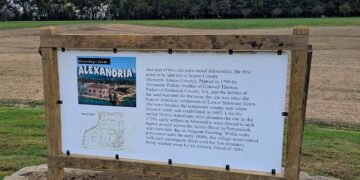Maintaining healthy, nutrient-rich soil is crucial for farmers. Some of them wonder if they should use treated sludge on their fields. Treated sludge, or biosolids, is a cost-effective, nutrient-rich fertilizer. Before applying this readily available resource, let’s weigh the benefits, potential drawbacks, and environmental considerations to decide what’s best for your farm.
What Is Treated Sludge?
Treated sludge is the byproduct of wastewater treatment. Treatment methods vary but typically include anaerobic or aerobic digestion, composting, lime stabilization, or heat drying. Each method kills harmful pathogens, reduces odors, and converts nutrients into stable forms.
The resulting biosolids must meet strict federal and state standards, such as EPA’s Part 503 regulations, before they can be land-applied. This confirms they are safe for contact with crops, livestock, and waterways.
The Benefits of Using Treated Sludge
Biosolids are rich in nutrients and organic matter, and they can replenish soil and promote healthy crop growth. They improve soil structure by enhancing aeration and water infiltration. Many farmers appreciate that biosolids come at little to no cost from wastewater treatment facilities, making them cost-effective.
Biosolids also contribute to sustainability by recycling waste materials. Instead of being discarded, they are repurposed for agricultural use, enhancing soil health and supporting waste management efforts.
Potential Concerns To Consider
Farmers must weigh the health and safety risks of using biosolids. Treated sludge may contain trace amounts of heavy metals, synthetic chemicals, and pathogens that could negatively affect soil quality. Understanding heavy metals through sludge sampling is essential to ensure lead, arsenic, and cadmium don’t enter your soil. Regular testing helps you identify and address these risks.
Public perception is another concern. Though biosolids meet regulatory standards, consumers may worry about food safety. Clear communication about the treatment process should alleviate these concerns.
Logistical Considerations
Before incorporating treated sludge into your farming operations, plan the timing. Biosolids are best applied in the fall or early spring, when fields are not actively growing crops and weather conditions allow nutrients to settle into the soil before planting.
Odor management is another consideration. While treatment reduces the smell, some biosolids have a strong odor when first applied. Safe storage, spreading techniques, and application timing minimize impact on nearby residents or livestock.
Landowners need the right equipment for hauling and spreading. Some local wastewater treatment plants may offer delivery or assistance, but others may require farmers to arrange their own transport. Complying with local requirements is also critical, which may restrict how close biosolids can be applied to property lines, wells, or water sources.
Make a Smart Decision
Determining whether you should use treated sludge on your fields depends on your farm’s needs. With these pointers, you can make the right decision for your land. Whether you’re looking to cut costs, improve soil fertility, or integrate sustainable practices, treated sludge is worth considering.





















































































